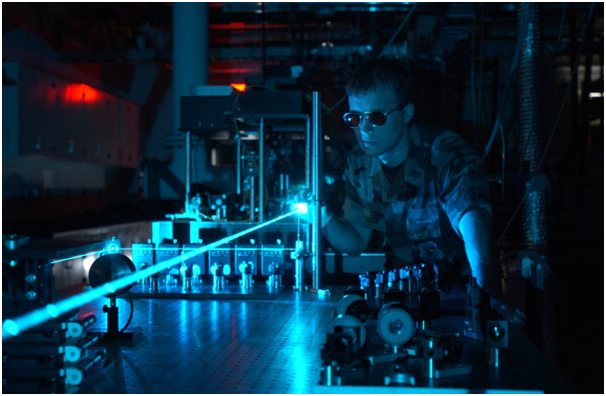Demands from the automotive industry for greater economic efficiency and lightweight body construction have led to increased efforts in R&D for metal-plastic hybrid assemblies. Despite originating primarily from vehicle manufacturers, the topic has grown in importance for other industrial sectors, such as aerospace engineering.

The possibilities of hybrid assemblies
The application of a short-pulse high-powered laser has been shown to allow the creation of a simple joint with high levels of load-bearing capacity. This proof of concept has given design engineers access to entirely new and highly innovative possibilities for construction involving metal-plastic hybrid assemblies.
Metal is the most frequently used material in the fabrication of load-bearing components in automotive assemblies. Developments in plastics engineering over the past couple of decades offer new possibilities, however. Plastics are generally cheaper and lighter than metal, so by substituting metal parts for plastic, both vehicle weight and the costs of manufacturing can be reduced. Running costs of vehicles are also reduced due to lower fuel consumption.
Traditional techniques
The one obstacle to the wholesale adoption of plastic in this context has been the ability to create a reliable joint between the metal and plastic components. Traditional technologies include in-mould assembly (IMA), where the plastic is moulded directly onto the metal substrate, or post-mould assembly (PMA), where both the plastic and metal components are fabricated separately before bonding later. Metal bonding adhesives are usually not suitable for plastic to metal bonds as most are only metal to metal adhesive.
PMA processes tend to be used more frequently than IMA as the latter restricts design flexibility due to the fact that the metal component must be adapted to fit in the moulding tool, which requires a sealed joining process to work successfully. PMA still frequently fails to meet the mechanical demands of automotive applications, however, and requires additional connective elements to create a durable joint.
Laser bonding
Advances in laser technology have created an entirely new technique for bonding metal and plastic. A high-powered nanosecond laser is used to produce a metal-plastic bond with high load-bearing capacity. This laser bond brings with it a range of mechanical benefits, such as a seal that is temperature-resistant, gastight and watertight. Neither an additional bonding process nor the use of extra connective elements is required, opening a world of possibilities for hybrid assemblies.
